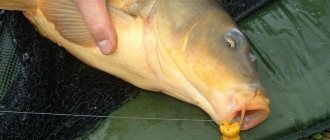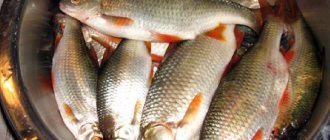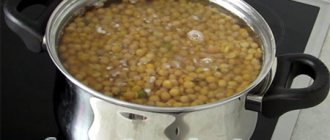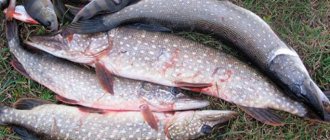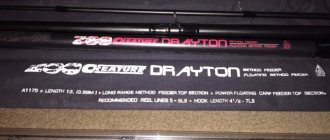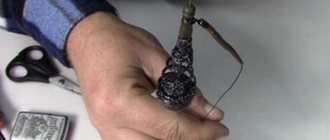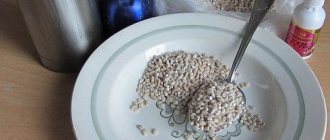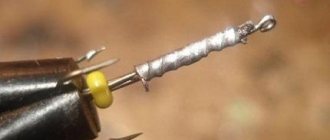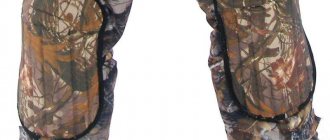The dough is a fairly catchy bait, especially when fishing in cold water.
Naturally, it does not always work, and more often the fish prefer animal baits, such as worms, maggots and bloodworms, but it also happens that the dough turns out to be more catchy, because a lot depends on the preferences of the fish in a particular body of water.
What are the advantages and disadvantages of dough as an attachment? What are the recipes for the dough, and what kind of fish is caught using the dough?
Advantages and disadvantages of dough as bait
- In the water, turbidity forms around the dough, which is noticeable to fish visually and by smell.
- You can change the size of the dough on the hook, adjusting it to the size of the fish.
- You can easily add various flavors and test a particular smell and taste of the dough.
- Making the dough is faster than digging up worms, and cheaper than buying bloodworms or maggots.
- You can add dyes to the dough, which can have a positive or negative effect on the bite)
- The dough can fly off the hook when casting, and it can also be quickly knocked down by small fish. In this case, you need to make a thicker dough.
- In hot weather, the dough spoils quickly and only lasts a couple of hours.
Features of Hard Dough Balls for Fishing
Fishing balloons were invented in Hungary. Carp fishing is very popular in this country. As you know, when fishing for carp, floating baits are often attached to hooks, which subsequently float above the feeders on short leashes.
In addition to the usual boilies, pellets and polystyrene foam, hard dough balls were tested on the lakes and rivers of Hungary. Their main feature is the fact that after a short stay in water they become soft, maintaining positive buoyancy. It is very easy for fish to swallow these balls. Therefore, they often bite more confidently than with other baits, including the ones mentioned above.
Why are balls called cookies? The fact is that the manufacturing company is called Cukk Puffi (by the way, Hungarian). She released a whole series of attachments with scents of garlic, anise, honey, vanilla, strawberry, etc. In the water, the balls stay on the hook for 20-50 minutes, depending on the strength of the current in the fishing area.
At first, anglers were quite skeptical about the air test. Why use these balls if you have cheap foam and the usual maggots and worms. But practice has confirmed the catchability of these balls. Moreover, more than once it happened that the fish did not bite at anything, but responded to the airy dough. This is especially noticeable in hot weather, when the fish is indifferent to all kinds of plant and animal baits.
Why is the cook so catchy? Firstly, it looks no different from polystyrene foam. If the fish is attracted to the point, then sooner or later it will bite on the dough. Secondly, and this is the most important thing, the dough has nutritional value, unlike foam. It has a distinct smell and is no different from bread in terms of calorie content. That is, it turns out that dough is a product that has the best qualities of bread and foam.
When the ball soaks and becomes soft, it easily moves along the fore-end, but does not fall off if it is made from quality ingredients. It turns out that when the fish tastes it, it does not feel hardness. She takes the bait more boldly, without feeling the catch. Therefore, sweeps are more effective. When a hard foam is attached to the hook, the lethargic fish can bite once and go home.
When fishing with air dough, you don’t have to painfully choose the moment when to swing the rod. The bites themselves are more confident and it’s easy to figure out when to hook. There are, however, nuances with hooks. When we catch small and medium-sized roach, it is better to use the smallest balls and place them on hooks No. 14-16 with a short shank. In this case, it will be possible to minimize the number of idle bites.
Let us also note the aromatic qualities of the airy dough. The soft ball releases a fairly strong aroma that will definitely attract fish. There is also odorless white dough. Be sure to try it. The fact is that fish respond best to white balls. This has long been an established fact. When fishing on white polystyrene, fish bite more actively than on yellow or red ones. Most likely it's a matter of color. It contrasts sharply with the environment, but at the same time it is not as alarming as bright red and light green shades.
Another important advantage of dough balls is their versatility. They are suitable for catching various white fish: roach, crucian carp, carp, bream, silver carp, grass carp. Manufacturers produce dough of various diameters. Therefore, you can choose it to catch different types and sizes of fish.
It is very useful to combine the dough with animal baits: maggots, bloodworms and worms. The effect is better than when using polystyrene foam. In this case, the effect is double. Firstly, the nozzle rises and is located in the water column. Secondly, you get a complete sandwich consisting of plant and animal food.
Maybe someone will think that cook is a little expensive in comparison with the same polystyrene foam. But this price is justified. The results eloquently confirm the catchability of this bait.
Fishing dough made from flour
The flour dough recipe is the easiest to prepare. Wheat, rye and corn flour are suitable for it. Just take flour, add water little by little, and mix gradually.
You can also add egg yolk to the dough, which will make it more sticky and fragrant.
The consistency should be quite thick so that the dough does not fly off the hook during casting. We advise you to take a little flour when fishing, so that if something happens, add more flour to the dough, making it thicker.
How to prepare roach dough
As a rule, recipes for roach dough differ from each other only in the different additives, based on flour and water. For roach, it is better to use premium quality wheat flour.
Flour dough is obtained by constantly stirring the flour and gradually adding water until the desired consistency is obtained. Then knead the mass with your hands until the dough stops sticking to your hands.
Of course, such a composition will not bring success. To lure fish, various fillers and flavorings are added.
The easiest option is to add milk powder to the flour. Experience has shown that roaches like such additives.
The semolina for the dough is poured into a gauze bag and immersed in boiling water for 25 - 30 minutes, then cooled, kneaded and flavorings are added. There is no need to stuff semolina into the bag tightly, otherwise the semolina will not cook through in the middle.
See more roach test recipes here.
Dough flavors
To give the dough a better smell, you can add various flavorings and flavorings, for example the following:
- vanilla;
- honey;
- garlic;
- dill;
- cinnamon;
- makukha;
- valerian;
- anise drops;
- sunflower oil.
Air dough storage
After purchasing a cookie, you need to pour it into some small container with a lid. Manufacturers usually sell the dough in bags. They are not reliable. If they are slightly damaged, such packages tear and the balls roll out. If you leave the package open, gusts of wind will blow the attachments away.
If the container is dense and has a zip lock, then you can store the balls in it. You can use boxes of the same colors as the dough. It is very comfortable. You will always know which one contains honey and which one contains garlic. It is not recommended to store balls of different scents in the same container. True, manufacturers produce mixed dough. One package can contain balls with the scents of vanilla, shrimp, honey, etc.
Dough with cake
As you know, sunflower cake, or ground seeds, is very popular with fish such as crucian carp, carp, roach, and bream, and this should be used by adding ground cake to the dough.
The dough should be thick, and adjust the amount of ground cake experimentally. Add the cake directly while fishing.
Good analogues to this recipe are adding unrefined sunflower oil or anise oil, which also have an attractive aroma for fish. But you need to add a minimum, since too strong an aroma can simply scare away the fish.
You can also try kneading the dough not with regular water, but with juice from canned corn.
Dough with potatoes
Potatoes are suitable for catching carp and crucian carp, but in their usual form they are not used, as they do not stick well to the hook, so they are added to the dough for viscosity. Add crushed boiled potatoes to the thick dough in a ratio of 1:3, where most of it is dough, or experiment yourself.
How to properly set a hook
In order to place dense dough on the hook, you need to tear off a small piece and roll it into a ball with a diameter of 2-3 mm with your fingers. Next, put the ball on the hook as much as possible so that the sharp part is not visible. The liquid dough is held together by its viscosity and can be applied to the hook even with a syringe. It should be noted that the hook tip may be covered with bait, or may be open.
The main thing is that there is enough bait and the fish notice it. At the moment of swallowing, the fish does not notice the details. The denser the consistency of the bait, the better it stays on the hook. But the fish prefers soft and loose food, so keeping it on the hook is problematic. To do this, add cotton wool to the dough.
Important! The size of the fishing spring depends on the size of the prey. For crucian carp, springs 5 cm long and about 2 cm in diameter are used.
To combine the dough with cotton wool, you need:
- roll out the dough into a thin layer;
- apply a small amount of cotton wool to it;
- roll the ingredients into a tube;
- knead.
At the same time, the dough remains soft, and thin fibers of cotton wool securely hold it on the hook. To better hold the bait, “dough-spring” hooks are also used. These hooks have an additional element in the form of a barrel spring. Its coils hold the soft nozzle. To clean the spring from bait residues, you should have a special brush.
Cold preparation of semolina dough
Place semolina in a bag and under running water, knead the bag until the semolina in it sticks together. Add flavorings to the dough to taste, as in the previous recipe. Semolina dough should be stored in a plastic bag.
To increase ease of use, take a large syringe, remove the piston, fill it with semolina, put the piston back in place, and cut off the nose of the syringe. The semolina is squeezed (wound) onto the hook.
For fishing test, hooks with a short shank, with numbers 4,5,6, are better suited.
What montages are best to use hard dough with?
Initially, the cook is a bottom and carp bait. It is most advisable to use it with a method feeder with leashes 2-5 cm long. You can use one or two leashes made of braid or fishing line.
Hard dough works well for hooked plugs. It is used on the same principle as polystyrene foam. Viscous bait is stuffed into the feeder or plug, and balls or sandwiches are threaded onto the hooks.
Cook is well suited for feeder leashes of various lengths. Depending on the horizon on which fishing is carried out, leashes of different lengths are used. Roach, sabrefish, crucian carp, and sometimes silver bream respond well to the dough when fishing with feeders. It makes sense to experiment with attachments of different scents.
It is very useful to combine balls of different colors during feeder and bottom fishing with leashes of different lengths. For example, you can plant anise and garlic cookies, or vanilla and honey cookies at the same time.
Another important point regarding the hard ball attachment. Before threading the hook through the shank, it is better to wet the dough a little and then prick it. In this case, you will not dull the hook tip.
It is very important to pay attention to the manufacturer of the balls. It is better to buy a little more expensive attachments like yours presented. Otherwise, there is no guarantee that the ball attached to the hook will not fly off immediately after casting. In addition, often the odors of cheap balls disappear instantly.
Some anglers successfully use air dough when float fishing. It works especially well when fishing for roach or sabrefish. Sometimes a slowly floating ball with the scent of vanilla can attract fish from schools so much that the angler can only pull out the fish one by one.
If we talk about the best options for cook, then fishermen have three types in favor: garlic, honey and white, odorless. It cannot be said that, for example, vanilla or strawberry are much inferior to the above. It’s just that these three types are most often sold in fishing stores. For fishing, it is enough to have 2-3 species, and you can count on a good bite. If the fish respond to a floating bait, these baits will satisfy their appetites.
You can place the dough directly on the hook, or on a hair rig, as when fishing for carp.
How and when is it better to fish with dough?
You can try fishing with dough at any time of the year, but it works best in the off-season in cold water, when peaceful fish are in the shallows.
It has also been noticed that crucian carp in summer prefers vegetable baits, including dough.
When fishing with a float, the area is filled with food, and the bait is thrown next to the bait. The fish can be located both on the bait spot itself and at the edge, so you need to feed locally and watch where they bite most often.
With this fishing technique, you will have to recast very often, about twice a minute.
For fishing with dough, it is best to use a rig with several sinkers that are distributed along the line.
Fishing place
It is preferable to go fishing in a place where the flooded talnik or reeds ends , and that the depth at the fishing site is no more than 150 centimeters. In this case, it is better to choose a more or less flat bottom, since during the period of flooding there is a lot of last year’s grass in such places, and the smoother the table is, the easier it will be for the roach to detect the bait, there will be fewer snags, and in general it will be more comfortable.
Tips for fisherman: Which bait is best for roach in winter - What to choose for fishing
We also select a place with shallow depth and a relatively flat, preferably hard bottom, depending on your luck, and place the float rod so that the float does not spin in the whirlpools, but is in one place, 2-3 meters from the edge of their border. After which we begin to look for roach, and if found, we begin fishing in the place where the first one was caught.
For catching larger fish, when you have to wait for a bite, it may be more advisable to use a more viscous dough. Then it is more convenient to make pellets from it and apply it with your fingers.
The dough is a very effective attachment. Its attractiveness to fish is sometimes simply surprising. It happens that in cool water, i.e. in autumn, winter and spring, white fish do not take bloodworms and caddis flies, but are caught on the dough. And very active. What is the special appeal of the test? How to make it correctly and how to fish with it...
How to make fishing dough
Making dough for fish is not difficult. You need to deliver a small supply of flour, a 20 mg syringe and a small container - a 250 ml glass - to the pond. Ingredients: flour and water.
During manufacturing, the main thing is to maintain the necessary proportions to obtain the desired viscosity. On the one hand, the dough should be as soft as possible, and therefore attractive to fish. On the other hand, it should not fall off the hook when casting, if it is properly wound on the hook. You need to make the optimal viscosity.
This is the best way to prepare dough for fishing. A little flour is poured into a glass, then water is added little by little, portion by portion, with constant stirring. This action lasts 5 - 10 minutes, and the dough for fishing is ready.
A syringe is used
It is better to use the test with a syringe. It is better to pull the dough into it using vacuum. But a pump is not needed. The piston is removed from the syringe, the open part of the syringe is inserted into the dough, and on the other side a vacuum is created with the mouth.
If the dough is of optimal density, i.e. If it is sufficiently liquid, it should be able to be drawn into the syringe without any problems. But when squeezing out, the dough continues to crawl out of the syringe when it is not needed. Therefore, you definitely need to stock up on a medical needle cap.
Cooking options
An alternative to flour is semolina. It makes semolina mash. You just need to knead and leave it for longer - about 20 minutes. But in terms of catchability, ordinary wheat flour is still better.
You can add smell and attractants to the dough. It is possible that it will turn out well, as long as you don’t overdo it. But for cold water, an additional pungent odor is often not necessary; it interrupts the bite. While the plain dough continues to catch fish well. Having a supply of flour, you can experiment with the attractiveness by making a portion separately.
Dough in cold water
Often fishermen in cold water do not use vegetable baits at all, sensibly believing that at this time nothing will be better for fishing than bloodworms, worms and maggots. According to the theory, fish in cool water will be primarily interested in living creatures, which are much more nutritious.
But there are no absolute rules in fishing, and that’s what makes it interesting. Despite everything, fish in cool water are often caught better with dough than with bloodworms. Moreover, the effectiveness of the test is surprising - the bites of roach, bream, and crucian carp are greedy. Can be repeated for a long time, i.e. the flock remains in place and is clearly interested in the bait.
Why do fish like dough?
What is the reason why fish dough is so attractive? There are probably several reasons.
How to hook dough
When inserting the dough, you should not leave the tip open. This bait will quickly wash itself and slide off the hook, gradually exposing the sting.
In most cases, the dough is squeezed out of the syringe and at the same time wrapped around the hook - around the hook, tip and shank in several turns.
If the dough is made and set correctly, then it stays on the hook not only when casting, but also withstands not one but two bites. After the first one, the remnants should provoke a second one.
Fishing Features
For catching larger fish, when you have to wait for a bite, it may be more advisable to use a more viscous dough. Then it is more convenient to make pellets from it and apply it with your fingers.
Tips for fisherman: How to put maggots on a roach hook - What is the difference, pros and cons
Often an effective sandwich is dough with livestock. The first one to bait the hook is the larva. And then, the dough is wound higher, covering the sting, but so that the larva does not stick and remains mobile. It makes an excellent bait for bream.
It is advisable to choose a thin hook for fishing with dough, with a short shank, and white. The size should be small so that the dough winding holds better. The shape depends on the fish being caught - now there are many hooks for their intended purpose, for bream, roach, crucian carp.
When to catch
When compared with other attachments, the dough is especially effective in cold water. In the off-season, when the weather is bad, sunfish often stay on the shallows among the already (or not yet) green thickets. In such conditions, with the help of the test you can detect schools of roach or crucian carp trails. While other baits are not in demand.
But in the summer you shouldn’t forget this bait, especially when the bite is excellent. Because this bait causes a greedy bite and adds excitement with its presence.
Fish serving techniques
The main method of catching is on the fall. Or by weight, casting past the bait and swimming through the feeding spot. Or wiring around the bait point. This is a very effective maneuver, since the fish often circles not far from the baited point, periodically running at it to steal...
A distributed load is used on the fly rod. And sometimes it is better to use a light jig instead of sinkers when fishing by weight.
Frequent recasting during active biting is the main technique for using the test when fishing. The fishing spot is saturated with aroma, the fish more actively takes the tasty soft bait.
Mamaliga recipes
3.1.Corn flour dough with bread and honey
- corn flour
- boiled water
- aniline dye orange or yellow
- bread
- honey
The dough is prepared according to the recipe described above. To the dough, add crumbled white bread (about one hundred grams) and 1 large spoon of honey. Mix the resulting mass thoroughly.
3.2 Dough made from corn and rye flour
- corn flour
- Rye flour
- boiled water
- aniline dye orange or yellow
The recipe for preparing such bait is the same as for corn bait. The amount of rye flour should be fifteen percent, and corn flour - eighty-five. The amount of water is about eighty to eighty-five percent of the total flour. Tint as desired.
3.3.Dough made from corn and wheat flour
- corn flour
- Wheat flour
- boiled water
- aniline dye orange or yellow
Take twenty percent wheat flour and eighty percent corn flour. The standard amount of water is taken - eighty percent. You can also paint it if desired.
3.4.Dough made from corn and low-grade barley flour
- corn flour
- low-grade barley flour
- boiled water
- aniline dye orange or yellow
- Boil 90-100 percent of the water.
- Add 20 percent barley flour and 80 percent corn flour. The flour is sifted through a fine sieve. The cooking recipe is the same as for corn.
3.5 Bean and cornmeal dough
- corn flour
- bean puree
- boiled water
- aniline dye orange or yellow
Add 80 percent corn flour to 70-75 percent water. According to the previous recipe, add 20 percent bean puree.
3.6 Corn flour dough with egg yolk
- corn flour
- egg yolk
- boiled water
- aniline dye orange or yellow
Add 80 percent water to 100 percent corn flour. Prepare according to the standard recipe. Add 1 yolk to the resulting mass and knead.
3.7 Corn flour dough with yolk and honey
- corn flour
- boiled water
- aniline dye orange or yellow
- yolk
- honey
Add 100 percent cornmeal to 70 percent water. First add 1 large spoon of honey to the finished dough, and then the egg yolk.
It often happens that fishermen sit on the ice, drill hole after hole, but do not bite. The fish is not in the mood.

